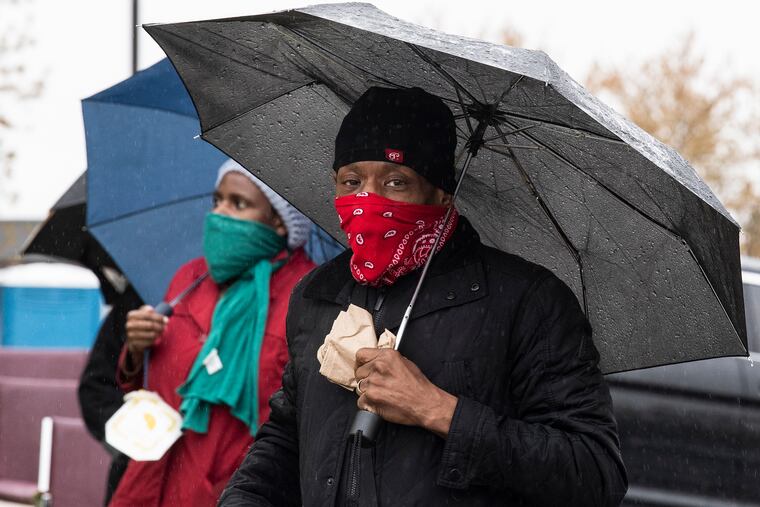Coronavirus is especially cruel to minorities. A doctor prescribes solutions. | Expert Opinion
Beyond Pennsylvania's inadequate test numbers, we need to look at who has access to testing. We need a targeted strategy focused on high-risk communities before more lives are lost.

With great anticipation we await the benchmarks for testing and contact tracing which are being designed to allow a safe reopening of society without incurring another COVID-19 outbreak.
But from the testing that already has been done, disturbing facts have emerged.
In Pennsylvania, African Americans comprise 22% of all COVID-19 deaths, yet represent just 12% of the population.
In Philadelphia, 54% of the COVID-19 deaths are among African Americans, well beyond their share of the city’s population.
Overrepresentation as front line workers – not only in health care but also retail, transportation and other services — and greater prevalence of preexisting conditions such as diabetes and hypertension have already been implicated as reasons.
Underlying all that however, are the social challenges and economic inequities well documented more than 100 years ago by W.E.B. DuBois in his landmark sociological study, “The Philadelphia Negro.” After a full year living in the old seventh ward and conducting more than 5,000 interviews, DuBois came to conclusions that still are all too applicable about the impact of racism and poverty on even a culturally rich and vibrant community.
As policymakers consider the path forward to containing COVID-19 and reopening parts of the economy, diagnostic testing and contact tracing are the most vital means to that end. However, when it comes to testing, we are falling short. In Pennsylvania, the testing rate is less than half that of New York, Massachusetts, and Louisiana and 33% less than New Jersey. This is no surprise since Pennsylvania ranks 44th in public health spending compared to other states according to the United Health Foundation. And beyond our inadequate test numbers, we need to look at who has access to testing. We need a targeted strategy focused on high-risk communities before more lives are lost.
Pennsylvania cannot accomplish this goal of widespread testing on its own, considering the multiple private companies, research institutions, and medical centers which share this space, the supplies required to conduct the testing, and the absence of a robust national public health infrastructure to strategize and implement interventions. Clearly, 1.2 million tests per week — the number performed last week in the United States — is not enough, given the many millions of individuals at risk
What the U.S. needs to ramp up testing is a well-coordinated federal effort. Without federal help, individual states, and Pennsylvania in particular, will suffer immeasurable consequences.
So, how can we change the status quo? First of all, testing volume has to significantly increase in order to begin to better contain the virus through identifying infected individuals, at least to levels achieved in New York and New Jersey. In the absence of national efforts to coordinate testing, regional testing should be considered, shifting resources as needs evolve. Once these two requirements are in place, additional steps are needed, using an equity lens as a filter:
Facilitated access to testing, considering individuals with high-risk jobs and chronic conditions as an initial focus and associated resources for contact tracing;
Implementation of culturally appropriate messaging regarding the need for testing;
Engaging trusted community partners to amplify efforts;
Ensuring there is follow up with primary care providers for continuous care for chronic conditions.
If businesses, public transit and other facilities reopen before these recommendations are in process, another wave of cases is likely.
If anything positive can come from this pandemic, it could be that it forces society to address the structural inequities described a century ago. Lives and livelihoods are at stake.
Eve J. Higginbotham is vice dean for diversity and inclusion and a professor of ophthalmology at the Perelman School of Medicine of the University of Pennsylvania.